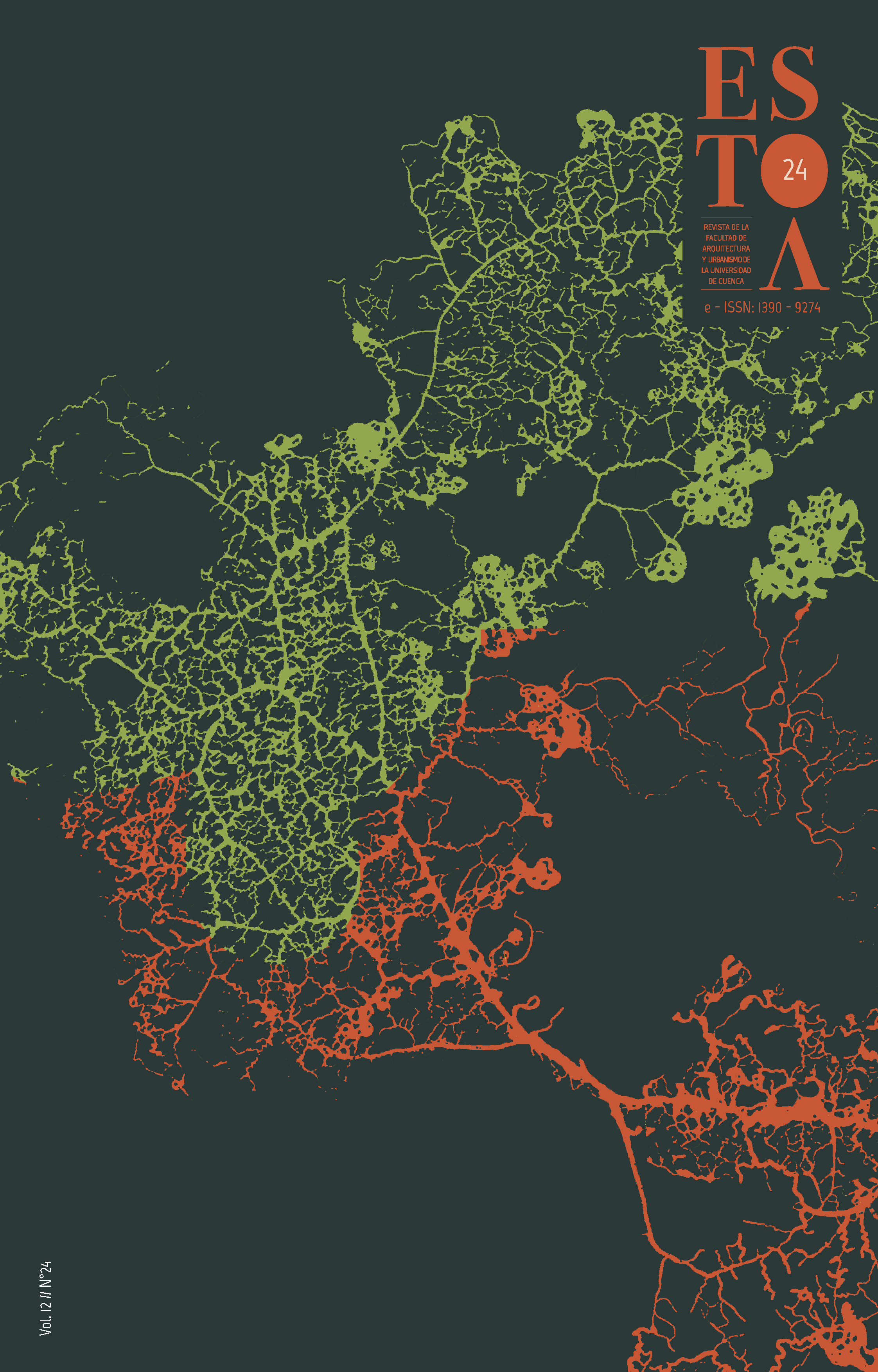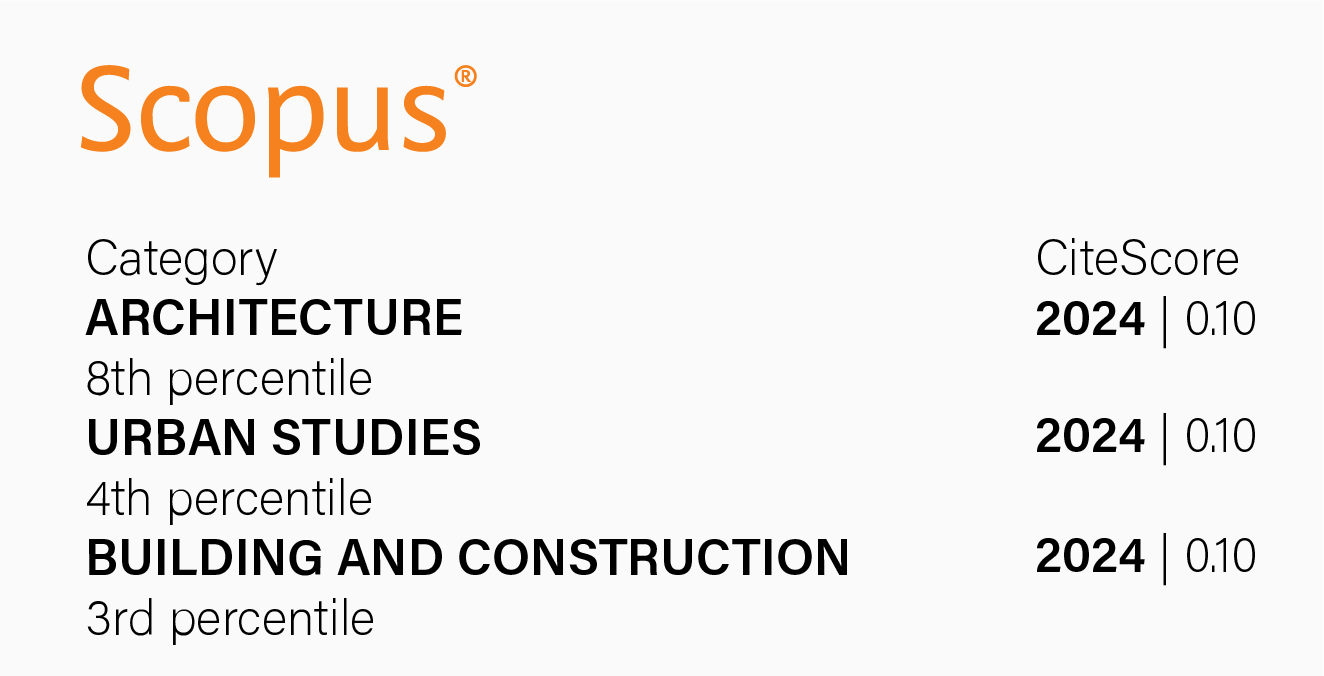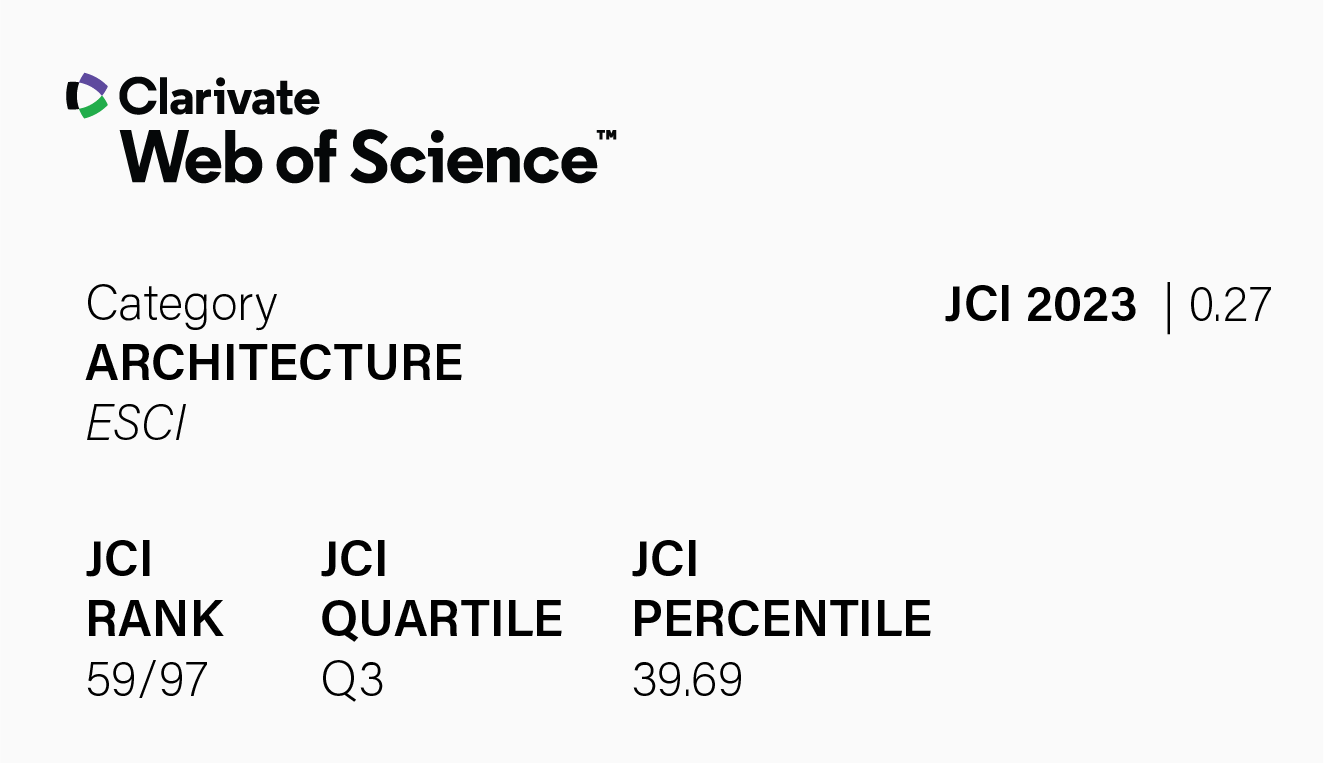Educational spaces for the present: architectural design based on Reggio Emilia pedagogy
DOI:
https://doi.org/10.18537/est.v012.n024.a14Keywords:
school, project, spatial qualities, natural lighting, vegetationAbstract
Architectural space is relevant in the teaching-learning process; in this sense, Reggio Emilia pedagogy considers space as the third teacher. In this work, the architectural premises of the pedagogical model were identified, evaluation instruments were developed and applied to case studies. Six schools in different countries were evaluated. The school located in Japan obtained the highest score (16/17), while a case study located in Mexico obtained the lowest score (10/17). Overall results showed that contact with the outdoors was the premise with the highest score (100%), in second place connection with nature (72%) and in third place the incorporation of a space (63%). Information on projects that incorporate the architectural premises of Reggio Emilia pedagogy, as well as their evaluation, is scarce, so it is necessary to disseminate and analyze these educational spaces and develop evaluation instruments.
Downloads
References
Abramson, S., Robinson, R., y Ankenman, K. (1995). Project Work with Diverse Students: Adapting curriculum based on the Reggio Emilia approach. Childhood Education, 71(4), 197–202. https://doi.org/10.1080/00094056.1995.10522597
Al, S., Sari, R. M., y Kahya, N. C. (2012). A Different Perspective on Education: Montessori and Montessori School Architecture. Procedia - Social and Behavioral Sciences, 46, 1866–1871. https://doi.org/10.1016/j.sbspro.2012.05.393
Alirio Pérez, Á., Africano Gelves, B. B., Febres-Cordero Colmenárez, M. A., y Carrillo Ramírez, T. E. (2016). Una Aproximación a las Pedagogías Alternativas. Educere, 20(66), 237–247.
Aljabreen, H. (2020). Montessori, Waldorf, and Reggio Emilia: A Comparative Analysis of Alternative Models of Early Childhood Education. International Journal of Early Childhood, 52(3), 337–353. https://doi.org/10.1007/s13158-020-00277-1
ArchDaily. (29 de noviembre de 2012). Leimond-Shonaka Nursery School / Archivision Hirotani Studio . https://www.archdaily.com/300134/leimond-shonaka-nursery-school-archivision-hirotani-studio
ArchDaily México. (21 de enero de 2013). Escuela Infantil Municipal De Berriozar / Javier Larraz + Iñigo Beguiristain + Iñaki Bergera . https://www.archdaily.mx/mx/02-228451/escuela-infantil-municipal-de-berriozar-javier-larraz-inigo-beguiristain-inaki-bergera
ArchDaily México. (27 de agosto de 2014). Kínder Monte Sinaí / LBR + A [Kínder Monte Sinaí / LBR + A]. https://www.archdaily.mx/mx/626064/kinder-monte-sinai-lbr-a
ArchDaily México. (24 de abril de 2015). El Jardín Cubierto / Laboratorio Permanente [The Covered Garden / Laboratorio Permanente]. https://www.archdaily.mx/mx/765903/el-jardin-cubierto-laboratorio-permanente
ArchDaily México. (22 de febrero de 2018). Hábitat Learning Community / Lara Hermanos. https://www.archdaily.mx/mx/889422/habitat-learning-community-lara-hermanos
ArchDaily México. (19 de junio de 2019). Preescolar Beelieve / 3Arquitectura . https://www.archdaily.mx/mx/919332/preescolar-beelieve-3arquitectura
Association Montessori International. (24 de mayo de 2023). AMI at UNESCO. https://montessori-ami.org/news/ami-unesco
Association of Waldorf Schools of North America. (18 de enero de 2022). Waldorf Education. https://www.waldorfeducation.org/
Barrett, P., Treves, A., Shmis, T., Ambasz, D., y Ustinova, M. (2019). The Impact of School Infrastructure on Learning: A Synthesis of the Evidence. En The Impact of School Infrastructure on Learning: A Synthesis of the Evidence. International Bank for Reconstruction and Development. https://doi.org/10.1596/978-1-4648-1378-8
Bartlett, S., y Gandini, L. (1993). Amiable space in the schools of Reggio Emilia: An interview with Lella Gandini. Children’s Environments, 10(2), 113–125. https://doi.org/10.2307/41514885
Benoit, A. E. (1998). The Reggio Emilia Approach to Education [Tesis de Licenciatura Universidad Saint John’s]. Repositorio institucional. https://digitalcommons.csbsju.edu/honors_theses/672
Byun, W., Blair, S. N., y Pate, R. R. (2013). Objectively measured sedentary behavior in preschool children: Comparison between Montessori and traditional preschools. International Journal of Behavioral Nutrition and Physical Activity, 10, 1-7. https://doi.org/10.1186/1479-5868-10-2
Camacho Prats, A. (2017). La Arquitectura Escolar: Estudio de Percepciones. Revista internacional de educación para la justicia Social, 6(1), 31–56. https://doi.org/10.15366/riejs2017.6.1.002
Canakcioglu, N. (2022). Exploring the social logic of preschool environments structured with Waldorf, Montessori, and Reggio Emilia. 13th Space Syntax Conference Paper, Bergen, Noruega.
Chartier, M.-A., y Geneix, N. (2006). Pedagogical Approaches to Early Childhood Education. Paper commissioned for the EFA Global Monitoring Report 2007, Strong foundations: early childhood care and education. https://unesdoc.unesco.org/ark:/48223/pf0000147448_eng
Chattin-McNichols, J. (2013). Work in Society and in Montessori Classrooms. Montessori Life: A Publication of the American Montessori Society, 25(3), 18–25.
Cossentino, J. (2009). Culture, Craft, & Coherence: The unexpected vitality of Montessori teacher training. Journal of Teacher Education, 60(5), 520–527. https://doi.org/10.1177/0022487109344593
Damovska, L. (2005). The Waldorf-Pedagogy and Children With Special Needs. Journal of Special Education and Rehabilitation, 6(1–2), 35–42. https://doi.org/https://doi.org/10.5281/zenodo.28994
Díaz-Bajo, P. M. (2019). Panorama Actual de las Pedagogías Alternativas en España. Papeles Salmantinos de Educación, (23), 247–281. https://revistas.upsa.es/index.php/papeleseducacion/issue/view/8
Dodd-Nufrio, A. T. (2011). Reggio Emilia, Maria Montessori, and John Dewey: Dispelling Teachers’ Misconceptions and Understanding Theoretical Foundations. Early Childhood Education Journal, 39(4), 235–237. https://doi.org/10.1007/s10643-011-0451-3
Eckhoff, A., y Spearman, M. (2009). Rethink, Reimagine, Reinvent: The Reggio Emilia Approach to Incorporating Reclaimed Materials in Children’s Artworks. Art Education, 62(2), 10–16. https://doi.org/10.1080/00043125.2009.11519007
Edwards, C. P. (2002). Three Approaches from Europe: Waldorf, Montessori, and Reggio Emilia. Early Childhood Research & Practice, 4(1), 78-90.
Ellis, J. (2004). The significance of place in the curriculum of children’s everyday lives. Taboo: The Journal of Culture and Education, 8(1), 23–42. https://eric.ed.gov/?id=EJ795473
Filippini, T. (1993). The Experience of Reggio Emilia: a place where adults and children learn together. En Educare in Europe. The United Nations Educational, Scientific and Cultural Organisation. https://unesdoc.unesco.org/ark:/48223/pf0000096122
Fleming, D. J., Culclasure, B., y Zhang, D. (2019). The Montessori Model and Creativity. Journal of Montessori Research, 5(2), 1–14. https://eric.ed.gov/?id=EJ1234751
Fombella Coto, I., Aias Blanco, J. M., y San Pedro Veledo, J. C. (2019). Arquitectura escolar y metodologías docentes en el siglo XXI: respuestas a un nuevo paradigma educativo. Revista Inclusiones, 6(4), 65–91. https://revistainclusiones.org/index.php/inclu/article/view/91
García, A. (2017). Otra Educación ya es Posible: Una Introducción a las Pedagogías Alternativas (6th ed.). Litera.
Goldshmidt, G. (2017). Waldorf education as spiritual education. Religion and Education, 44(3), 346–363. https://doi.org/10.1080/15507394.2017.1294400
Hall, T. (2017). Architecting the ‘third teacher’: Solid foundations for the participatory and principled design of schools and (built) learning environments. European Journal of Education Research, Development and Policy, 52(3), 318–326. https://doi.org/10.1111/ejed.12224
Jaatinen, J., y Lindfors, E. (2019). Makerspaces for Pedagogical Innovation Processes: How Finnish Comprehensive Schools Create Space for Makers. Design and Technology Education, 24(2), 42–67. https://ojs.lboro.ac.uk/DATE/article/view/2623
Jones, S. J. (2017). Technology in the Montessori Classroom: Teachers’ Beliefs and Technology Use. Journal of Montessori Research, 3(1), 16–29. https://eric.ed.gov/?id=EJ1161304
Lopata, C., Wallace, N. V., y Finn, K. V. (2005). Comparison of academic achievement between montessori and traditional education programs. Journal of Research in Childhood Education, 20(1), 5–13. https://doi.org/10.1080/02568540509594546
Marshall, C. (2017). Montessori education: a review of the evidence base. Npj Science of Learning, 2(1), 1–9. https://doi.org/10.1038/s41539-017-0012-7
Mercilliott Hewett, V. (2001). Examining the Reggio Emilia Approach to Early Childhood Education. En Early Childhood Education Journal, 29(2), 95–100. https://doi.org/10.1023/A:1012520828095
Mitchell, L. M. (2007). Using Technology in Reggio Emilia-Inspired Programs. Theory Into Practice, 46(1), 32–39. https://doi.org/10.1080/00405840709336546
Moss, P. (2016). Loris Malaguzzi and the schools of Reggio Emilia: Provocation and hope for a renewed public education. Improving Schools, 19(2), 167–176. https://doi.org/10.1177/1365480216651521
Nicholson, D. W. (2000). Layers of experience: Forms of representation in a Waldorf school classroom. Journal of Curriculum Studies, 32(4), 575–587. https://doi.org/10.1080/00220270050033637
Nicholson, E. (2005). The school building as third teacher. En M. Dudek (Ed.), Children’s Spaces (1st ed., pp. 49–65). Taylor & Francis Group.
Nordlund, C. (2013). Waldorf Education: Breathing Creativity. Art Education, 66(2), 13–19. https://doi.org/10.1080/00043125.2013.11519211
Rinaldi, C. (2021). En diálogo con Reggio Emilia: escuchar, investigar, aprender. Discurso e intervenciones 1984-2016. Morata.
Roth, A. C., y Månsson, A. (2011). Individual development plans from a critical didactic perspective: Focusing on montessori- and Reggio Emilia-profiled preschools in Sweden. Journal of Early Childhood Research, 9(3), 247–261. https://doi.org/10.1177/1476718X10389148
Schieren, J. (2012). The Concept of Learning in Waldorf Education. Research on Steiner Education, 3(1), 63–74. www.rosejourn.com
Serra, M. F., y Fernández, F. (2020). Arquitectura escolar en el siglo XX: aproximaciones desde cuatro publicaciones latinoamericanas recientes. A&P Continuidad, 7(13), 72–81. https://doi.org/10.35305/23626097v7i13.285
Soto, A. B. (2022). Revisión Crítica de la Historia y Desarrollo de la Educación Alternativa y las Escuelas de Segunda Oportunidad. Revista de Humanidades, (45), 171–196.
Stegelin, D. A. (2003). Application of the Reggio Emilia Approach to Early Childhood Science Curriculum. En Early Childhood Education Journal, 30 163-169. https://doi.org/10.1023/A:1022013905793
Tarr, P. (2001). Aesthetic Codes in Early Childhood Classrooms: What Art Educators Can Learn from Reggio Emilia. Art Education, 54(3), 33–39. https://doi.org/10.1080/00043125.2001.11653447
Tillmann, S., Tobin, D., Avison, W., y Gilliland, J. (2018). Mental health benefits of interactions with nature in children and teenagers: a systematic review. Journal of Epidemiology & Community Health, 72(10), 958–966. https://doi.org/10.1136/JECH-2018-210436
Trincado, S. (2020). El tercer maestro: arquitecturas para la pedagogía de Malaguzzi [Tesis de Licenciatura Universidad Politécnica de Madrid]. Repositorio institucional- Universidad Politécnica de Madrid http://oa.upm.es/62855/1/TFG_Jun20_Trincado_Alonso_Sofia.pdf
Uceda, P. Q., y Zaldívar, J. I. (2013). Waldorf education and play in the Kindergarden. An outstanding theoretical proposal. Bordon. Revista de Pedagogia, 65(1), 79–92. https://doi.org/10.13042/brp.2013.65105
UNESCO. (24 de Mayo de 2021). Non Governmental Organizations - Friends-Waldorf-Education-Rudolf-Steiner-Schools | UNESCO. https://es.unesco.org/datasets/non-governmental-organizations/friends-waldorf-education-rudolf-steiner-schools
Vakil, S., Freeman, R., y Swim, T. J. (2003). The Reggio Emilia Approach and Inclusive Early Childhood Programs. Early Childhood Education Journal, 30(3), 187–192. https://doi.org/10.1023/A:1022022107610
Westerberg, L., y Vandermaas-Peeler, M. (2021). How teachers, peers, and classroom materials support children’s inquiry in a Reggio Emilia-inspired preschool. Early Child Development and Care, 191(7–8), 1259–1276. https://doi.org/10.1080/03004430.2021.1881075
Published
How to Cite
Issue
Section
License
Copyright (c) 2023 Estoa. Revista de la Facultad de Arquitectura y Urbanismo

This work is licensed under a Creative Commons Attribution-NonCommercial-ShareAlike 4.0 International License.
The Journal declines any responsibility for possible conflicts derived from the authorship of the works that are published in it.
The University of Cuenca in Ecuador conserves the patrimonial rights (copyright) of the published works and will favor the reuse of the same ones, these can be: copy, use, diffuse, transmit and expose publicly.
Unless otherwise indicated, all contents of the electronic edition are distributed under a Creative Commons Attribution-NonCommercial-ShareAlike 4.0 International License.




